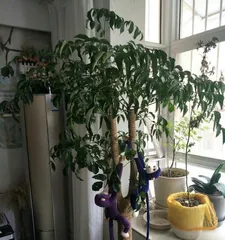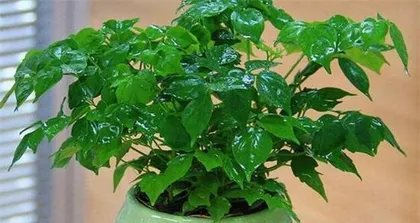Happiness Tree Old Stump is a cultivation method that transforms waste wood into beautiful works of art, capable of creating unique natural landscapes in places like gardens and parks. This article will detail the cultivation methods and care instructions for Happiness Tree Old Stump to help you create beautiful natural artworks in your home or public spaces.

Material Selection Requirements
Choose hard, dense hardwood materials, such as basswood, beech, or birch. Avoid wood with wormholes, rot, or numerous cracks, as this can affect the final planting outcome.
Pruning Method
Trim the wood according to the desired shape and size, using tools such as a chainsaw, handsaw, or axe. At the same time, consider the position and direction of new buds, and whether the lateral branches are reasonably placed.

Treatment Method
Process the selected wood by sanding and cleaning the surface to make it smooth and tidy. If there are cracks, they can be repaired with wood filler.
Hole Digging and Planting
After selecting a suitable location, dig a hole. Insert the wood into the hole and soak it in a disinfectant solution like lime water for about a day to prevent pest and disease infestation.
Watering and Fertilizing
After planting, the soil for the Happiness Tree Old Stump needs to be kept moist. Water once a day and fertilize once a week to promote its growth rate.

Sunlight Exposure
Happiness Tree Old Stump requires ample sunlight. Therefore, it should be planted in a location with plenty of light, receiving at least 6 hours of sun per day.
Pruning New Shoots
If the Happiness Tree Old Stump produces new shoots, promptly prune any unwanted branches, retain the main trunk, and trim it to an appropriate size according to the desired shape.
Drainage and Ventilation
When planting, loosen the soil in the hole and arrange for drainage. During hot summer weather, maintain good ventilation to prevent waterlogging at the roots, which can lead to death.
Pest and Disease Control
Happiness Tree Old Stump is susceptible to pests and diseases such as powdery mildew, black spot, and aphids. Add a fungicide to the water when watering, and regularly inspect for pests and diseases to take timely control measures.
Preventing Overgrowth
Happiness Tree Old Stump grows quickly and can easily overpropagate, leading to intense competition. Prune branches in a timely manner according to the actual situation to maintain the overall structural stability.
Preventing Damage
Happiness Tree Old Stump is vulnerable to damage from external forces such as wind, rain, or human activity. Therefore, choose a safe and secure location for planting and conduct regular inspections to prevent accidents.
Proper Trimming
One year after planting, the Happiness Tree Old Stump can be appropriately trimmed and processed to enhance its artistic value.
Focus on Aesthetic Appeal
Happiness Tree Old Stump not only has a greening effect but can also become a decorative art piece in the garden. Pay attention to the aesthetic appeal during cultivation and trimming.
Maintaining Humidity
During its growth, Happiness Tree Old Stump needs to maintain appropriate humidity; avoid excessive dryness, which can affect growth. You can increase humidity by laying soil, moss, etc., at the base.
Planting and caring for Happiness Tree Old Stump requires certain skills and experience. However, by following the methods described in this article, you can create beautiful and unique natural artworks to add a wonderful touch to your life.